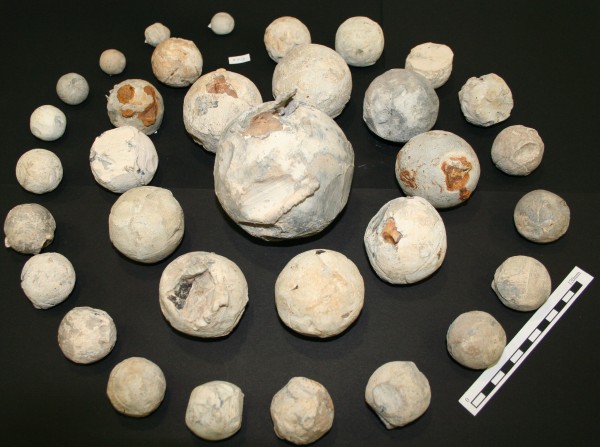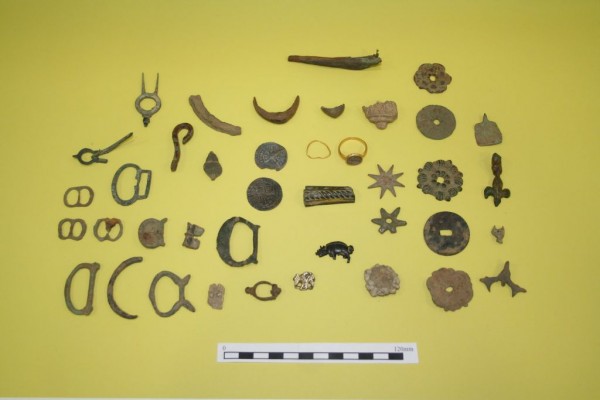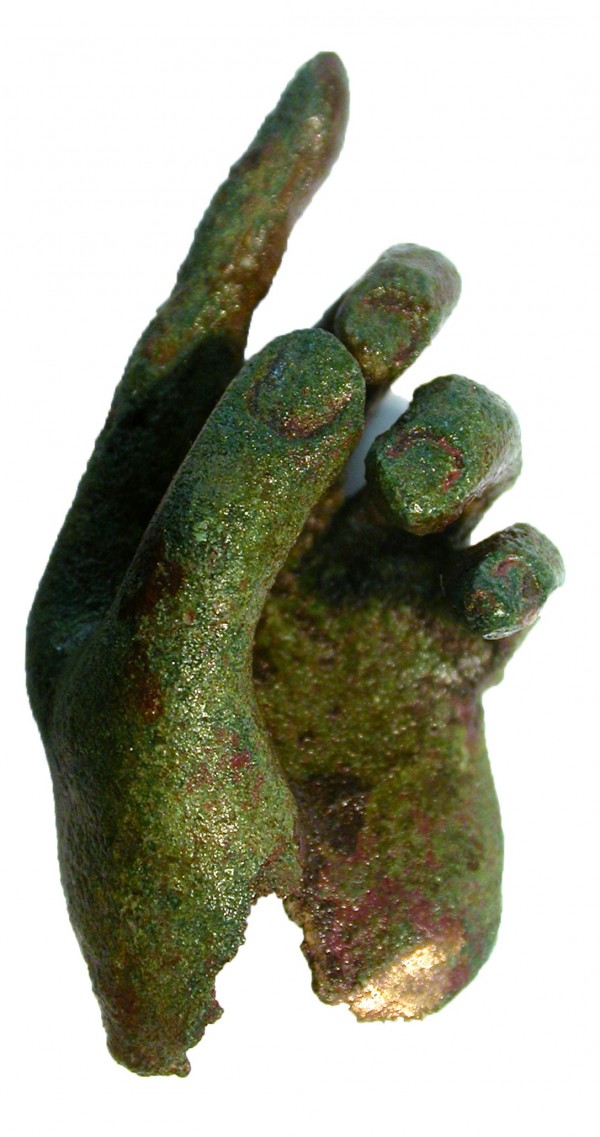The Bosworth Battlefield Collection
A collection of artefacts discovered during the Bosworth Battlefield Survey which aimed to locate the site of the battle of 22nd August 1485 when Henry Tudor brought a small rebel army to face the much larger royal army of King Richard lll.
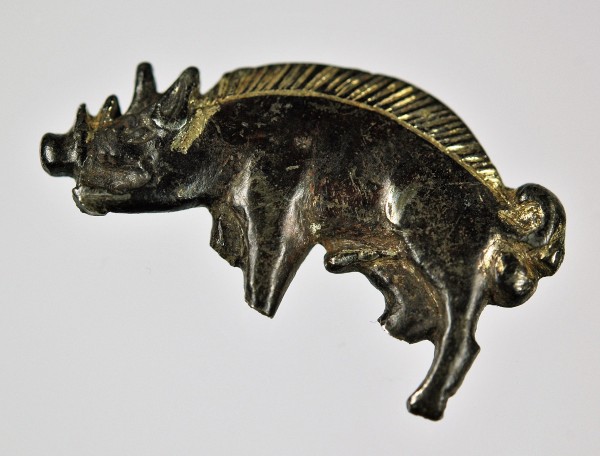
The tiny (29mm long) silver-gilt Bosworth Boar Badge may mark where King Richard made his last stand. The boar was the symbol of Richard III's household. The fact that it is gilded silver suggests it would have been worn by a high ranking person, close to the King. It was recovered from the site identified as the marsh where Richard is said to have been cut down in battle.

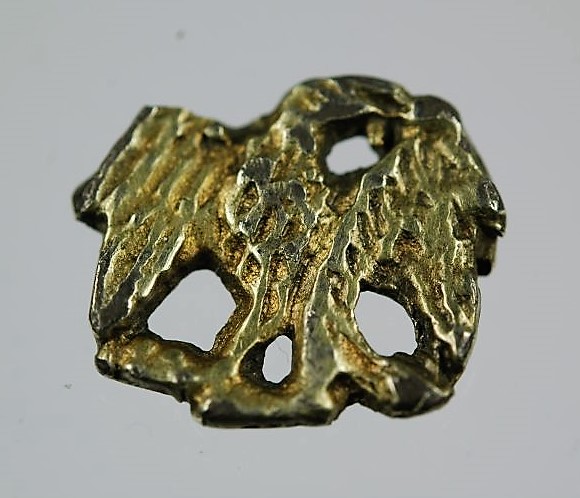
Late Medieval silver-gilt livery badge in the form of an eagle. Kevin Schürer (University of Leicester) believes that it is a fettered falcon and is part of the livery of Arthur Plantagenet. He was the illegitimate son of King Edward IV, and the falcons head facing right (the wrong way) is a symbol of illegitimacy. Edward IV was king before his brother Richard and was the father of the princes in the tower. There is no record of Arthur being present at Bosworth, but he could have been of fighting age, being born between 1461 and 75 - or perhaps one of his close household fought in his place?

The HLF funded Bosworth Battlefield Survey ran for five years, combining documentary, topographical and fieldwork research. The project aimed to locate any evidence of the 1485 battle. A metal detecting survey of a huge area of land finally recovered a unique collection of Medieval cannon balls and a scatter of small items lost by combatants in the battle. The most iconic of these is the Bosworth Boar Badge, which was found in 2009.
The Battlefield Survey proved that the battle was fought about a mile south west of Ambion Hill either side of the Fenn Lane.
A selection of this collection is displayed at Bosworth Battlefield Heritage Centre, the remainder is cared for at our collection facility and can be viewed by appointment.

